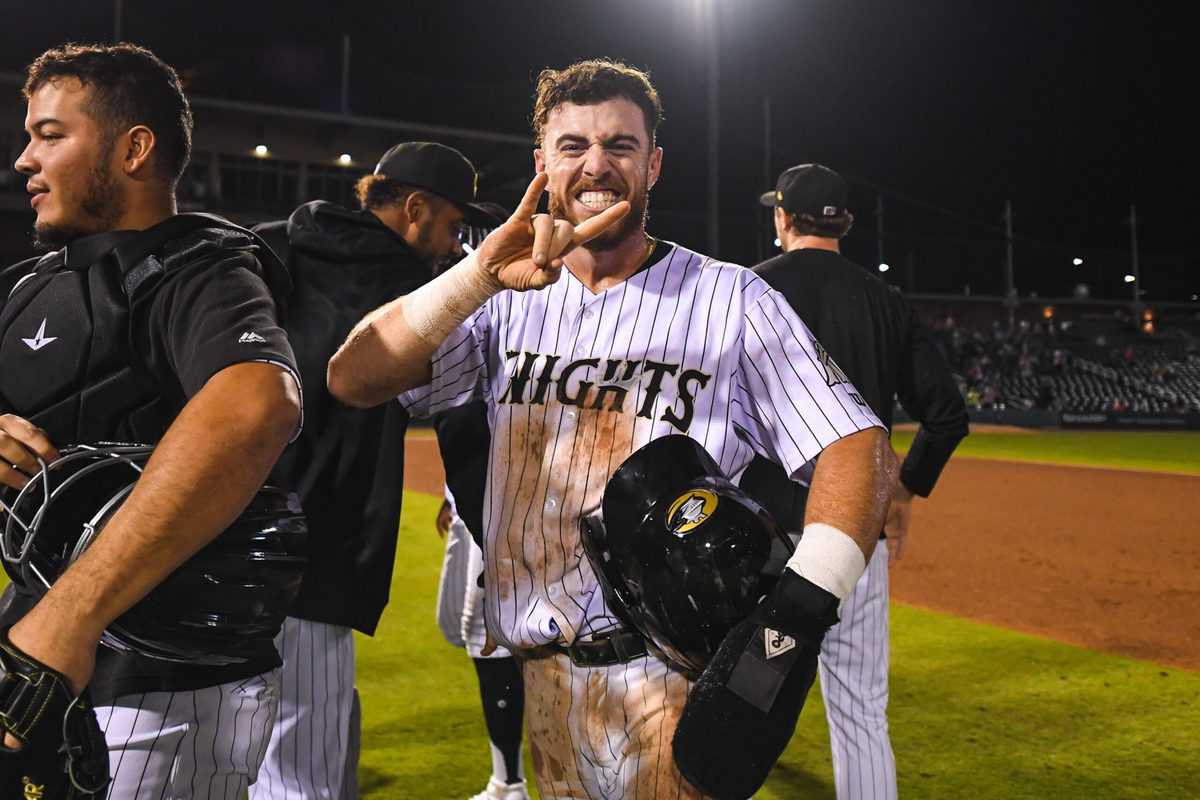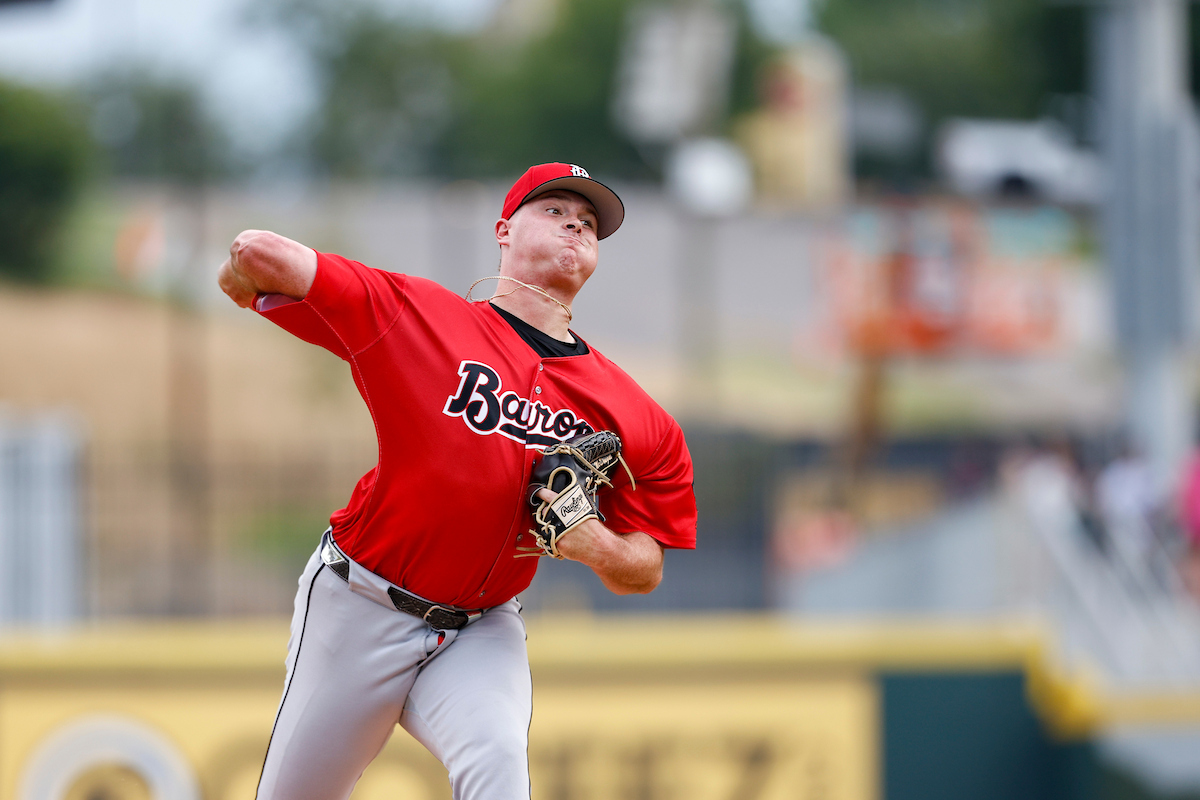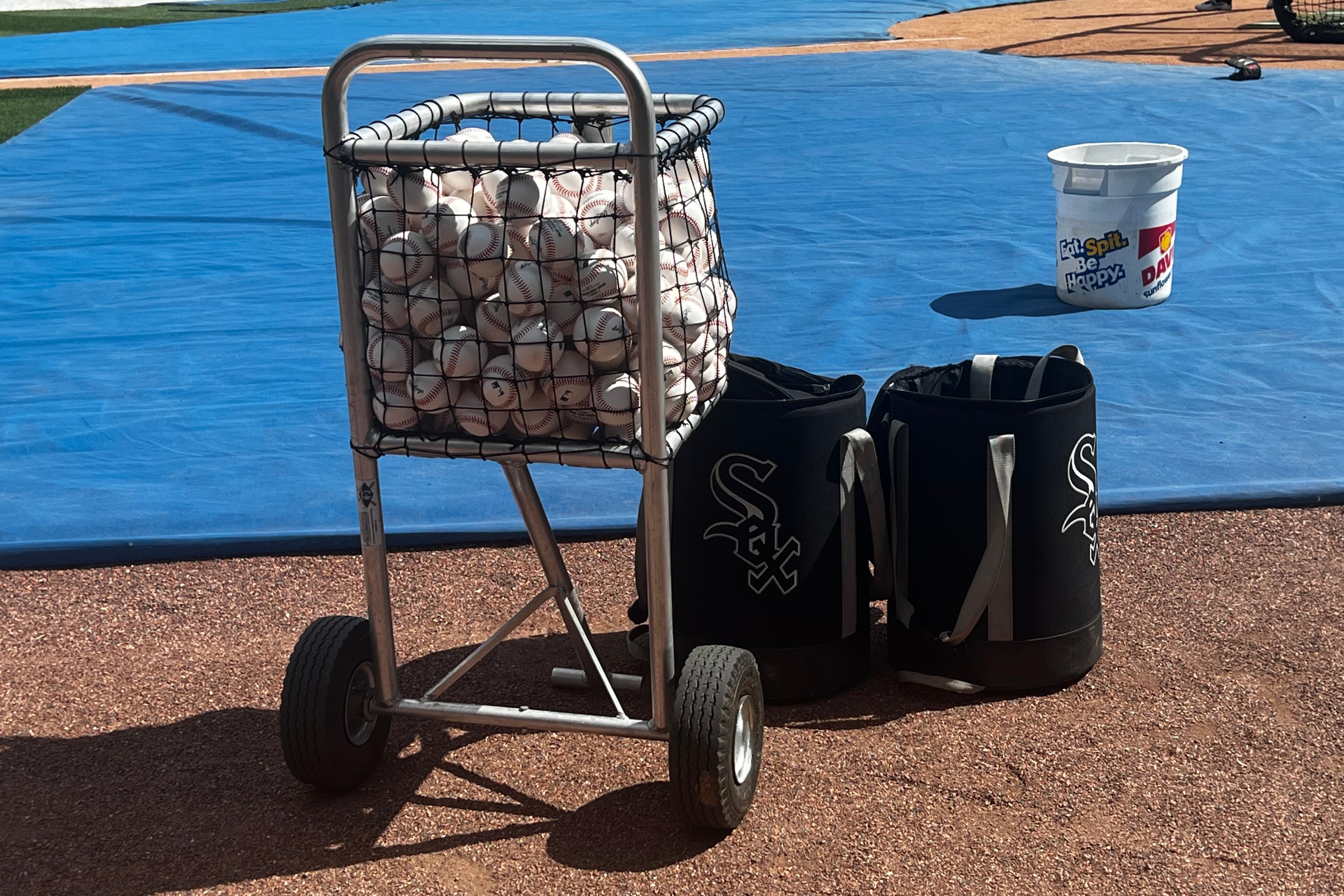So far this Prospect Week, we've examined the less exciting aspects of the White Sox farm system -- the mixed-bag of beginnings from recent additions, the young prospects still trying to make it click, the guys derailed by injuries.
After three days of heavy lifting, you deserve a switch to the uplifting with a tour of the annual oasis of White Sox prospects who did everything asked of them and more in 2021.
Jake Burger
Burger couldn't quite make up for three lost years in one season, but he found a way to knock out two of them. Placed in Triple-A despite having no standard minor-league experience above Kannapolis, Burger hit .274/.332/.513 in Charlotte, staying healthy and sustaining production long enough to earn what turned out to be a successful cup of coffee at the big-league level. He went 10-for-38 with a homer, triple and three doubles, with the White Sox sending him back down just as the league started bombarding him with adjustments.
There were signs of what had been holding him back. He missed two weeks with a bone bruise in August and wore down for the remainder of the season after returning. He also struck out 27 percent of the time, which is probably higher than the Sox hoped when they drafted him way back in 2017.
But the quibbles are all secondary to the fact that he played a full season with no physical restrictions. In fact, the White Sox even expanded his defensive repertoire by playing him at second. It doesn't seem like a feasible long-term strategy, as Burger doesn't have smooth motions at the position and really struggled on pop-ups, but it's cool to see the White Sox thinking outside the box, and Burger being stable enough to throw such assignments at him on a whim.
Out of every prospect in the White Sox system, Burger has the best chance of giving the big-league team a real shot in the arm during the 2022 season. His struggles were against slower stuff, and Gavin Sheets is right there as an example of somebody who learned how to cover changes and curves by toning it down in the box.
Romy González
During the winter, I said that González's rankings on prospect lists intrigued me more than anybody else, because he went from "organizational filler" to "20/20 guy in 78 Double-A games" with a pandemic in between.
What do you do with that? Do you chalk it up to finding a home at shortstop after playing everywhere else beforehand? Did he make the kind of adjustments you normally see in the Dodgers organization? Was he more ready to play than the average guy during what scouts called a ragged year for Minor League Baseball?
The 112 strikeouts over 93 games suggests an exploitability that might make an encore tough to envision , and he struck out 11 times over 33 plate appearances during a September call-up in 2021. Then again, nobody expected him to be an easy September call-up at any point, even if you gave him until 2031.
Basically, Gonzalez has covered the spectrum of prospects in just two seasons, and consequently, the rankings don't know what to do with him. Keith Law has him fourth, but he's not in Baseball America's top 10, and he didn't merit even an honorable mention in Baseball Prospectus. It's quite possible he's hit his ceiling, but it's hard to say he's done evolving given that he's barely been a player to know.
Jose Rodriguez
Burger had the most redeeming season of any White Sox prospect.
Gonzalez had the most explosive season of any White Sox prospect.
Rodriguez had the most enjoyable season of any White Sox prospect, and you can probably say the same thing about his whole career to date.
He hit at age 17 in the DSL after signing for $50,000, he hit at age 18 in the Arizona Rookie League, and then he returned from the pandemic void to post his best year yet, hitting .301/.338/.469 over 111 games across Kannapolis, Winston-Salem and Birmingham as a 20-year-old. The strikeout rate isn't a concern, the sneaky pop withstood both levels of A-ball, and while he's battled the occasional rough patch at shortstop, his problems are more of a matter of technique than physical capability.
The end of his season was a little anticlimactic. He drew just 26 walks over 501 plate appearances, and while a week of rain limited his late-season Double-A appearance to 14 ordinary plate appearances, he followed that up by hitting .226/.273/.323 in the Arizona Fall League. He played more games in 2021 than he had in his entire pro career beforehand, so I'm inclined to chalk it up to the grind, as well as being the youngest player on the Glendale roster.
If I weren't so inclined, I'd harbor some suspicions that at least some of his low-minors success is built on being a very good ballplayer at levels where talented hustle goes a long way. Take his stolen-base rates for instance:
- Kannapolis: 20-for-25 over 78 games
- Winston-Salem: 10-for-15 over 29 games
- Birmingham/AFL: 2-for-3 over 20 games
Should Rodriguez reach a level where his undersized Popeye power is harder to pull off, that could make his aggressiveness at the plate less of an asset, and his speed, while good, isn't going to be a way for him to reinvent himself as a weapon.
But part of that feels like punishing a guy for not having failed at any point in his career. Rodriguez doesn't turn 21 until May. He could just as well tighten up the loose parts with reps and maturation, and end up as a guy whose game is greater than the sum of its parts. The White Sox haven't had a prospect like him in forever. It's cool as hell.
Yolbert Sánchez
Sánchez seemed like an unexciting way to spend $2.3 million of international money in 2019, given that he was 22 years old and had a glove-first middle infielder profile. It became an even bigger drag when the pandemic prevented him from making his stateside debut until age 24, when his conditioning reportedly left him resigned to second base.
But after a quiet first few weeks with the Dash, Sánchez started hitting, and kept hitting all the way through the entire Arizona Fall League season, where he posted a .400/533/514 line over 45 plate appearances.
Sánchez hit .308/.352/.419 over 99 games during the regular season, striking out in just 12.4 percent of his plate appearances. He doesn't generate a lot of power, but it's partially for a lack of trying. What's more heartening is that his ISO didn't take a hit after a promotion to Birmingham. He got off a scorching start with the Barons and finished with a line of .343/.369/.469. He's not entirely eliminated from shortstop conversations, either. He played 40 games there despite overlapping at times with Rodriguez and González.
He's among the numerous White Sox prospects with a most likely outcome of utility infielder. He's reliant on his hit tool, without much in the way of power or patience to offset a dip in average. If you're bullish on Sánchez's bat-to-ball abilities remaining standout-grade against better competition, he might be a reason why the White Sox felt comfortable trading Nick Madrigal.
Caleb Freeman
Bennett Sousa
Anderson severino
The top level of the White Sox's bullpen depth disappointed in 2021. Matt Foster and Codi Heuer took steps backward, Zack Burdi never figured it out and Tyler Johnson got hurt. Ryan Burr's high-wire ground-ball act was a pleasant surprise, but the White Sox still needed to acquire multiple relievers at the deadline to offset the lack of internal reinforcements.
One or two levels down, the White Sox generated some new candidates. Freeman figured out how to throw strikes, allowing his fastball-curve combination to play up as a late-inning reliever of choice in both Birmingham and Winston-Salem. He and McKinley Moore -- Freeman's equivalent one level down -- both earned looks in the Arizona Fall League and survived.
Sousa showed a similar improvement in his control while climbing from Birmingham to Charlotte, finishing with 33 strikeouts against five walks over 22⅔ innings at Triple-A. He only merited senior-signing money when the White Sox drafted him out of Virginia in the 10th round in 2018 because of his age and LOOGY markings to his arsenal, but he's putting up a fight against that label with a fastball that now breaches 95 with regularity. The White Sox added him to the 40-man roster because he's pretty much ready for an audition whenever, even if he might need time to gain trust against righties.
Severino had more walks than strikeouts on his tab through the first month of the season, and he was the biggest offender in the 13-walk inning I saw in Birmingham. He walked four batters and plunked another while throwing just three of 21 pitches for strikes, so I reflexively wrote him off.
The rest of his season showed why you shouldn't write off anybody who sits in the high 90s. The walks still come in bunches, but so better kinds of hitless outings. From July through the end of the season, Severino struck out 36 batters against 14 walks over 29⅔ innings, which is tolerable when he allows only 17 hits and a slugging percentage of .212. It's hard to see him becoming a precision specialist when you see how he generates such velocity from a small frame ...
... but at 27, he's as close as he's ever been to pulling it off, and that's why he's on the 40-man roster even with Aaron Bummer and Garrett Crochet locking down the White Sox's lefty roles in at the major-league level for the foreseeable future.






